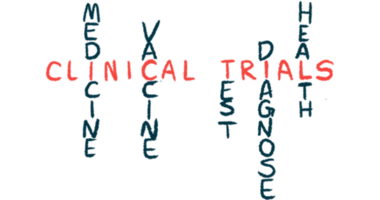A man with hemophilia B shares his gene therapy story, part 1
What led the 75-year-old to pursue what was then an experimental therapy

First in a series.
Have you ever wondered what it’s really like to receive gene therapy? I know I have. So when I had the chance to interview 75-year-old Chip Hailey of Tennessee — one of the participants in a clinical trial for Hemgenix (etranacogene dezaparvovec), the first gene therapy approved in the U.S. for hemophilia B — I jumped at it.
Volunteering for a gene therapy clinical trial requires extraordinary bravery. It means stepping into the unknown — placing trust in science, in a research team, and in a process that offers no guarantees.
For someone living with a lifelong condition like hemophilia, the decision isn’t just about hope for personal improvement; it’s about paving the way for others. Clinical trial participants often face uncertainty, potential risks, and emotional strain, yet they move forward with courage and purpose. Their willingness to be among the first is a powerful act of service to the community — transforming fear into progress, and hope into action.
Chip generously shared his journey with me via email. His story is full of courage, hope, and hard-earned perspective. I’ll share it in three parts, beginning here with his early experiences with hemophilia B and what led him to pursue gene therapy.
JL: Can you tell me a little about your hemophilia journey before gene therapy?
CH: My journey with hemophilia B began when I was diagnosed at 18 months after my parents noticed how easily I bruised — growing up on a family farm, I had many opportunities to hurt myself.
This was in the 1950s, and there really wasn’t a lot that doctors could do for me as there were no approved treatments at the time — just blood transfusion if I had a bad enough bleeding event. I grew up with severe symptoms, particularly in the joints in my ankles, knees, and elbows, and frequent joint bleeds forced me to miss school.
The first new treatment advance happened when I was in my teens: fresh frozen plasma. This was a significant development. At last, I had something on demand, and I was well enough to complete pre-pharmacy courses, attend and graduate from the University of Tennessee’s College of Pharmacy. Other treatment advances followed, which helped me better manage my condition.
What led you to consider gene therapy as a treatment option?
My interest in hemophilia research actually started when I was 10 years old after receiving a letter from an aunt describing research using beagles. I kept informed about the area, and in the last 25 years, there were two clinical trials I tried to join for gene therapy that ultimately fell through. I was determined to find another opportunity, and after hearing about another promising treatment, I proactively asked about being in the trial. In December 2019, I was infused with the therapy that would eventually be approved by the FDA [U.S. Food and Drug Administration] as Hemgenix. The outcome was better than I could have hoped for.
How did you feel when you first heard gene therapy might be possible for you?
It’s interesting that none of the potential risks scared me, even as I saw that other clinical trials failed. I was always focused on the best-case scenario, and the chance of having a good outcome was always in my mind. My attitude was never “what could go wrong?” I mean, I did know what could go wrong, but I chose to always think about what’s the best thing that could happen. And, for me, it actually did. I couldn’t have asked for a better result.
***
Chip’s path to gene therapy didn’t happen overnight. It was shaped by a lifetime of living with hemophilia B, witnessing medical progress, and carefully weighing the risks and rewards.
In part two, we’ll explore what it was like for him to receive gene therapy, including the process, the emotions, and the unexpected moments along the way. Stay tuned as Chip opens up about a groundbreaking experience that could change the future for many in the bleeding disorders community.
Thank you, Chip!
Note: Hemophilia News Today is strictly a news and information website about the disease. It does not provide medical advice, diagnosis, or treatment. This content is not intended to be a substitute for professional medical advice, diagnosis, or treatment. Always seek the advice of your physician or another qualified health provider with any questions you may have regarding a medical condition. Never disregard professional medical advice or delay in seeking it because of something you have read on this website. The opinions expressed in this column are not those of Hemophilia News Today or its parent company, Bionews, and are intended to spark discussion about issues pertaining to hemophilia.








Leave a comment
Fill in the required fields to post. Your email address will not be published.